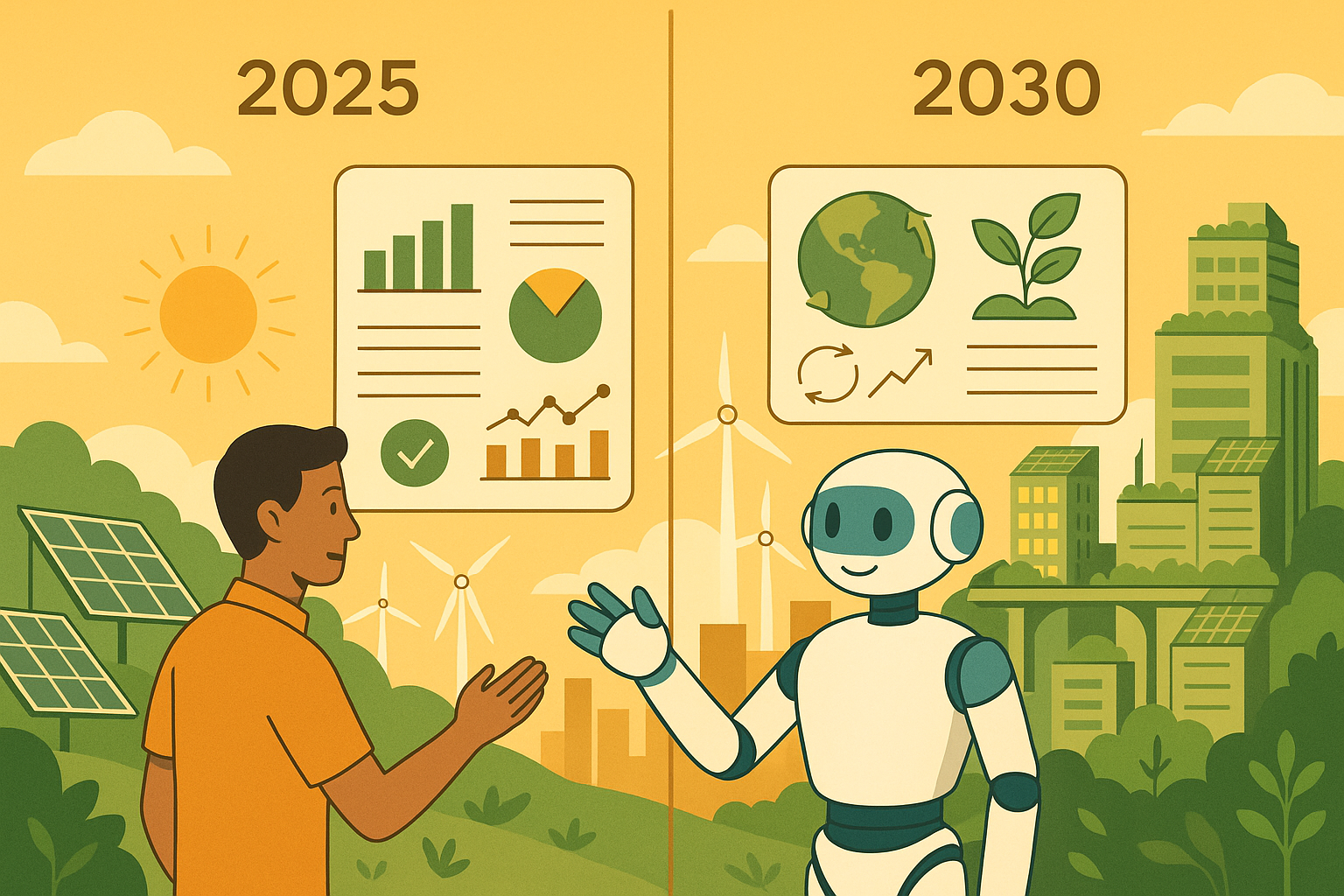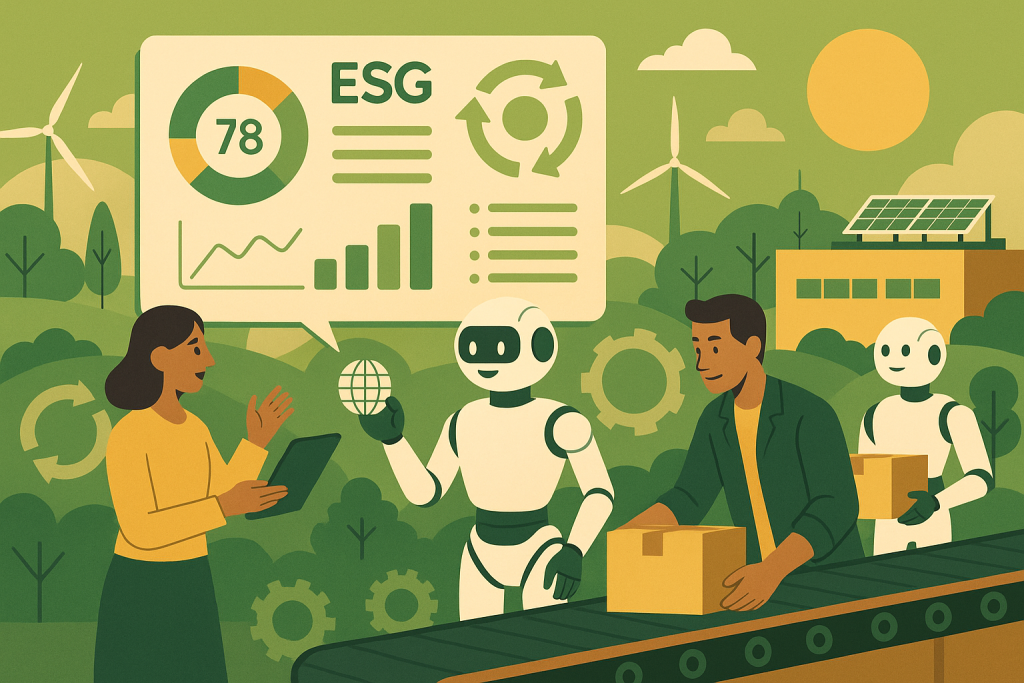Artificial Intelligence has become a critical ally in humanity’s pursuit of a livable planet. In 2025, AI is helping us measure, manage, and mitigate environmental impacts. But what lies ahead in 2030 is something deeper—an evolution from optimization to regeneration.
In this article, we chart the journey of AI in sustainability: where we are now, and where we’re headed.
🔍 Key Takeaways
- 2025: AI is reactive—used for energy efficiency, emissions tracking, and climate risk mitigation.
- 2030: AI becomes proactive—autonomously managing circular systems, ecological feedback loops, and ethical trade-offs.
- The shift: From digital tools to intelligent planetary infrastructure.
🌍 Where We Are in 2025
AI is no longer experimental. It’s already transforming how we measure and respond to sustainability challenges:
1. Energy and Grid Optimization
Smart grids powered by AI, like DeepMind’s applications in Europe, are forecasting electricity demand and adjusting energy flows to maximize renewable use—cutting peak emissions by 10–20%.
2. Emissions Tracking & ESG Automation
Startups like Normative and Persefoni use AI to pull data from supply chains, utility bills, and transport systems to provide near real-time ESG compliance and carbon accounting.
3. Climate Resilience and Risk Forecasting
AI models from companies like Tomorrow.io and Jupiter Intelligence now deliver hyperlocal climate risk forecasts—helping cities and insurers prepare for heatwaves, flooding, and crop failure.
4. Precision in Food and Waste Systems
AI-guided agriculture minimizes chemical usage and water waste. Meanwhile, automated waste-sorting robots are reducing landfill dependency.
Bottom line in 2025: AI is helping us see the problem more clearly and act more efficiently—but it’s still largely reactive.
🚀 Where We’re Headed by 2030
As we scale AI responsibly, 2030 will usher in the age of autonomous sustainability systems. These systems won’t just report metrics—they will manage processes, adapt in real-time, and even suggest ecological trade-offs.
1. AI-Directed Circular Economies
AI will help design products for reuse, coordinate repair logistics, and automate material recovery—powering cities that waste nothing.
2. Dynamic ESG Intelligence
Next-gen ESG copilots will simulate impact scenarios, helping organizations balance profit, planet, and people—on the fly and at scale.
3. Regenerative Infrastructure
Imagine AI managing urban biodiversity, soil health, and water use across entire cities—an ecosystem orchestrator, not just a monitor.
4. Planetary-Scale Dashboards
Integrated AI platforms will fuse satellite imagery, climate models, and supply chain data to track planetary health indicators—guiding global policy in real time.
🌿 Example: The Sustainable City of 2030
By 2030, a model AI-powered city might include:
- Energy systems self-balancing across solar, wind, and battery storage
- AI that predicts waste volumes and pre-allocates resources for reuse
- Urban farms tuned by AI to balance biodiversity and nutrition
- Buildings that communicate with each other to share excess power or heat
This is not speculative sci-fi. The foundations are already being laid in Singapore, Oslo, and Seoul today.
🧠 Benefits of AI-Sustainability Alignment
- ✅ Real-time decision-making across systems
- ✅ Accelerated climate adaptation and resilience
- ✅ Enhanced ESG accuracy and transparency
- ✅ Equity built into AI design and deployment
⚠️ Challenges We Must Face
To realize this vision by 2030, we must also confront critical risks:
- Bias and data gaps in AI models
- Opacity in sustainability scoring algorithms
- Energy intensity of large-scale AI training
- Global equity, ensuring all regions benefit from AI tools
Ethical governance and global cooperation are no longer optional—they are foundational to scalable, safe deployment.
🛤️ The Road Ahead: Aligning AI with a Thrivable Planet
As of 2025, we’re laying the digital foundations. The coming five years will determine whether AI serves as an extractive force—or becomes the great enabler of regenerative systems.
The question is not whether AI will shape our planet’s future—
It’s whether we shape AI in time to serve the planet.



